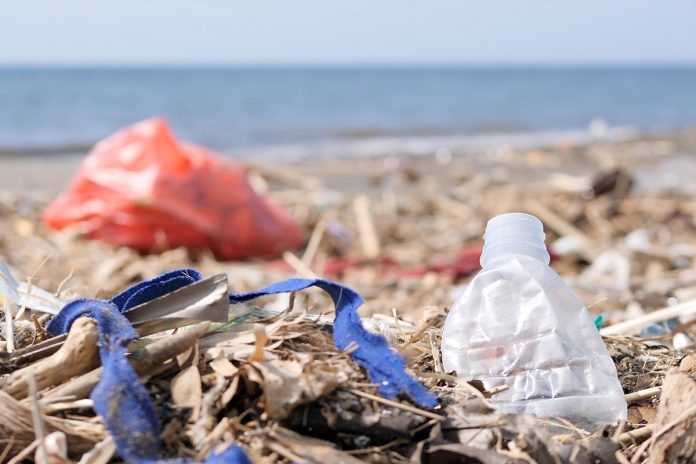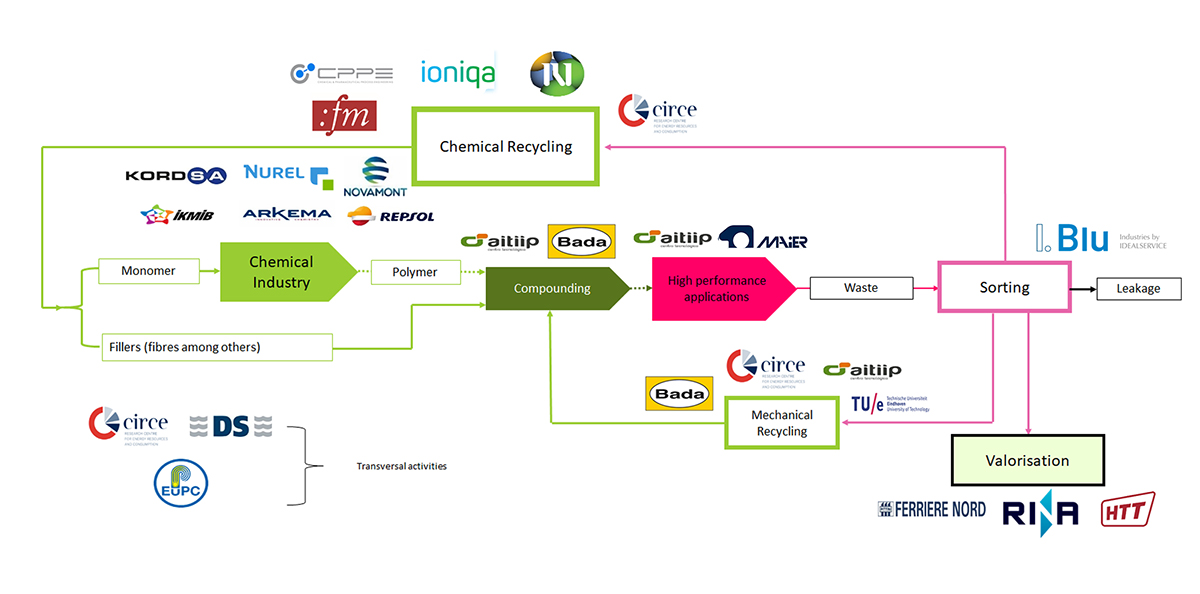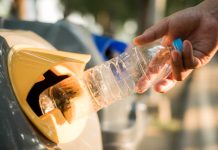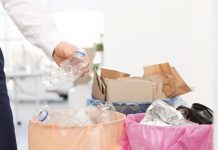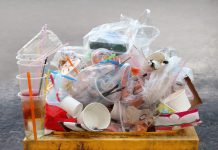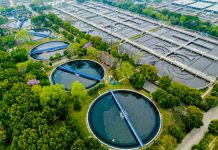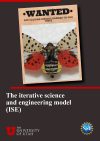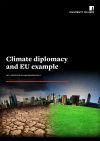Here, Tatiana Garcia-Armingol, Director of the Energy and Environment Group, CIRCE Foundation, discusses proposed innovations in mass recycling that seek to create a functional future without plastic waste
According to Plastics Europe, in 2016 around 26 million tons of plastic waste was generated whereas the amount collected for mechanical recycling was around 7.5 million tons, most of them, coming from the packaging sector (around the 80%). Considering these figures, the public awareness is continuously increasing which has led to the plastics’ demonisation.
However, plastics use and, in particular, high-grade plastics and composites used in engineering, aeronautic and/or medicine have also brought important progress to the society and some of them have even reduced the environmental impact in sectors such as automotive. Consequently, the main issue is not building a future without plastics but without plastic waste.
The real problem is the fact that, although the recycling figures for the packaging sector are higher, plastic waste coming from other sectors reveals a lower rate of recycling. One of the main reasons for the low recycling rate in plastic containing materials out of the packaging sector, is their heterogeneity.
Trends in plastic production
New trends in plastic production have brought products into the market, which are often specifically design for desired applications (most of them having fibres, mineral fillers or other additives to improve performance) with complex structures to fulfil specific requirements. Due to this structure, these materials are difficult to re-process in an efficient way while maintaining the quality requirements, hindering, therefore, mechanical recycling or causing down-cycling of recycled materials. In addition, other recycling and reuse approaches are either not economic and/or environmental favourable (e.g. chemical recycling) or valorisation rate is poor (energy valorisation).
In this sense, polynSPIRE will contribute to increase the recycling and valorisation rate of widely available plastic containing wastes (having low recycling rate) by means of improving the energy and resource efficiency, reducing the overall environmental footprint and increasing the sustainability of plastic sector. polynSPIRE addresses these improvements in different recycling and valorisation routes, which will allow to convert wastes into raw materials for different steps of the plastic value chain and for other value chains (such as steel sector).
To achieve their objectives, polynSPIRE proposes the implementation of three sets of innovations tested at relevant industrial environment (TRL7):
Innovation A is focused on chemical recycling processes to obtain the feedstock needed by chemical industries to synthetize new polymers, whose reintroduction at the beginning of the value chain will reduce the consumption of fossil raw materials. This innovation will be tested using two complementary technologies: Depolymerisation assisted by microwaves and depolymerisation catalysed by smart magnetic materials that can be recovered and reused several times. Using these technologies, important savings can be obtained making the chemical recycling cost-effective and more competitive. Particularly, using microwaves can imply an energy consumption reduction near to 70% and whereas the use of smart magnetic catalysts can increase efficiency up to 60% according to theoretical values.
Innovation B is focused on mechanical recycling to produce enhanced quality recycled materials to be used as raw materials by product manufacturers. Thus, these plastic wastes are reintroduced at the middle of the value chain. To this end, different technologies will be demonstrated: vitrimers, high energy irradiation and compatibilising additives integration. These technologies are demonstrated to be very efficient for the improvement of mechanical properties of recycled material making them more resistant and suitable for high grade applications reducing the risk of down-cycling.
Innovation C is focused on material valorisation of low-grade plastics as raw materials for other sectors. In polynSPIRE, plastic wastes will be used in the steel industry as substitute of carbon source for iron ore reduction and foaming agent (coke) leading to reductions of around an 80% of fossil carbon sources in electric arc furnaces (EAF) which brings important savings in terms of emissions.
To ensure the success of polynSPIRE, the project has been shaped with a robust approach, aiming at ensuring a smooth transition from TRL5 to TRL7 within the project lifetime.
In particular, the project development has been divided into four main stages:
Phase 1: Consolidating technologies. The main objective of this stage performed during the first year of the project was consolidating the validation in a relevant environment. As a result of this first phase all the innovative technologies have been tested at lab scale and they are ready to be scaled.
Phase 2: Widening the scope of the technologies. The project is currently overcoming this stage where, the technologies already validated in phase 1 will be up scaled and demonstrated in a relevant environment. The objective is to cover the whole TRL6 gap. At this moment, polynSPIRE partners are hardly working to overcome this phase. Results from lab scale performed during the first phase are quite promising but there are some challenges to overcome such us: pre-treatment of samples at larger scale, especially when managing foams, and making the overall system economically profitable in comparison to the use of conventional virgin feedstock.
Phase 3: Demonstrating the recycling processes. Once phase 2 comes to an end and the pilot units are fully operational under relevant controlled conditions, POLYNSPIRE pre-industrial trials utilizing real plastic residues, coming from waste management companies and recycling companies, will be carried out at the third year of the project (September 2021).
Phase 4: Validating the final products. Within this phase of POLYNSPIRE the TRL7 will be consolidated by the end of the project (September 2022).
As a result of these activities, polynSPIRE aimed at leading up to a direct 34% of fossil resources reduction in the case of Polyamide (PA) and 32% for Polyurethane (PU) leading to a reduction of CO2 equivalent emissions between 30% and 40%. The current results are very positive and aligned with the final achievement of these impacts, but detailed estimations will be expected for future phases of the project.
Please note: This is a commercial profile
Contributor Profile
Editor's Recommended Articles
-
Must Read >> How can you reduce plastic in your business?
-
Must Read >> A new vision of plastic production and plastic use



